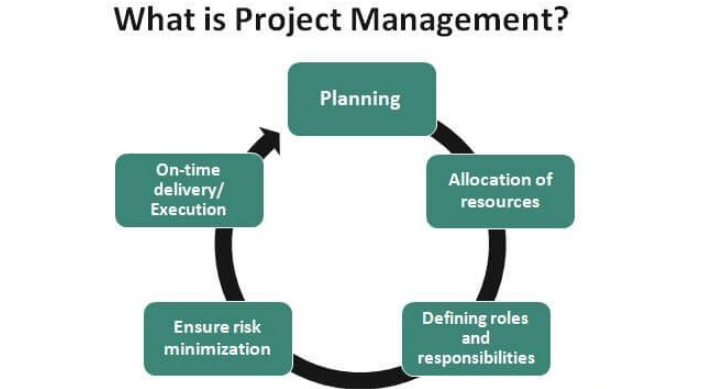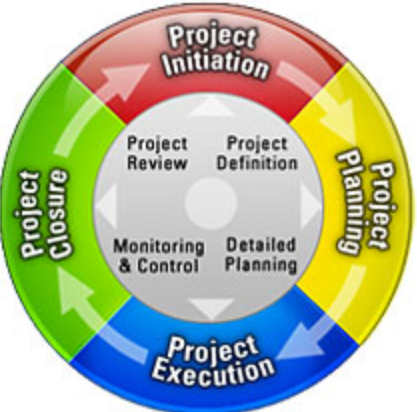Project Controls vs Project Management
Project management and project control are the two most important elements of any successful campaign. Although they may seem similar, they serve different purposes and play different roles throughout the campaign life cycle. Understanding the differences between control and management is critical for professionals seeking to optimize venture outcomes.

Project management is the practice of planning, organizing, and overseeing the execution of a campaign to achieve specific objectives within defined constraints. It involves coordinating various resources, tasks, and stakeholders to successfully complete a project on time, on budget, and according to quality standards.
What is The Key Components of Project Management?
- Goal setting: Clearly defining desired deliverables and goals, ensuring they are aligned with the overall strategic goals of the organization;
- Planning: Creating a detailed plan that defines the scope, deliverables, timelines, milestones, and resources needed to successfully complete the task. This includes identifying and managing risks, estimating costs, and determining the breakdown structure of work;
- Resource Allocation: Identifying and allocating the necessary resources, such as personnel, equipment, and budget, to effectively carry out activities. Effective resource management is critical to optimizing performance;
- Team Coordination: Managing the team and stakeholders, ensuring effective communication and facilitating collaboration among team members. PMs are responsible for motivating and guiding the team to achieve goals;
- Monitoring and Controlling: Continuously monitoring progress, keeping track of the plan and implementing controls to keep the campaign on track. This includes change management, problem solving, and risk mitigation throughout the project life cycle;
- Quality Management: Ensuring that deliverables meet required quality standards and specifications. This includes conducting quality assurance activities, conducting inspections, and implementing quality control measures;
- Stakeholder management: Identifying and engaging relevant stakeholders, understanding their needs and expectations, and managing their participation and communication throughout the campaign. Building strong relationships with stakeholders is essential to success;
- Completion: completing activities, evaluating their success against objectives, documenting lessons learned, and transferring results to the operations phase.
Management is applicable to a variety of industries and sectors, from construction and engineering to information technology and healthcare. It provides a structured approach to managing complex tasks effectively, ensuring efficient use of resources, reducing risk and achieving successful results.
What Is Project Control?

Project Control is the set of processes, tools, and methods used to monitor, measure, and manage performance. It includes tracking and analyzing activities, comparing them to the plan, and taking corrective action to keep the campaign on track.
What is The Key Components of Project Control?
- Performance Measurement: Monitoring involves collecting data and metrics related to campaign activities such as cost, schedule, quality, and scope. These metrics serve as performance measures and help assess the progress and effectiveness of the campaign;
- Detecting variances: This step involves comparing actual performance to planned performance to identify any variances or discrepancies. This includes analyzing differences in cost, schedule, resources, and results. Deviations may indicate potential problems or risks that need to be addressed;
- Risk Management: This activity includes identifying, assessing, and managing risks. Through continuous monitoring of activities, this approach helps identify emerging risks or changes in risk factors. This allows PMs to implement appropriate risk mitigation strategies;
- Change Management: Change management involves managing changes in scope, requirements, or goals. It includes evaluating change requests, assessing their impact on the project, and making decisions about approving or rejecting changes. It ensures that changes are properly documented, communicated, and integrated into the plan;
- Problem solving: It helps identify and resolve issues or problems that may arise during campaign execution. By monitoring activity and performance, project controls provide early identification of problems so that timely intervention and corrective action can be taken;
- Communication and Reporting: Monitoring facilitates effective communication among stakeholders. It includes regular status updates, progress reports, and dashboards to keep stakeholders informed of progress, risks, and issues;
- Monitoring works in tandem with project management, providing the necessary tools and information for PMs to make informed decisions and take appropriate action. It ensures that the campaign stays on track, sticks to goals, and achieves their desired results.
Common monotoring methods include cost management (EVM), critical path method (CPM), performance dashboards, risk registries, change control processes, and regular campaign status meetings. These tools and methods allow PMs to track performance, control costs, manage schedules, reduce risks, and maintain overall alignment with organizational goals.
What Is the Difference between Project Management and Project Control?
Here’s a table showing the key differences between project management and control:
| Main Characteristics | Project Management | Project Control |
|---|---|---|
| Focus | Establishing objectives, planning, organizing, and overseeing project execution. | Monitoring, measuring, and regulating performance. |
| Purpose | Ensuring success by delivering within scope, on time, and within budget. | Tracking progress, identifying deviations, and implementing corrective actions. |
| Scope | Broad and encompasses the overall project lifecycle. | Specific to monitoring and controlling project activities. |
| Activities | Defining objectives, creating a plan, allocating resources, managing stakeholders. | Performance measurement, deviation identification, risk management, change management. |
| Timeframe | From project initiation to closure. | Throughout the campaign lifecycle. |
| Decision-making | Strategic and tactical decision-making related to campaign objectives. | Operational decision-making based on real-time performance data. |
| Communication | Communication and collaboration among stakeholders. | Reporting progress, risks, and issues to stakeholders. |
| Outcome | Successful delivery of project objectives. | Performance optimization and risk mitigation. |
While project management provides the foundation and direction for the project, campaign control ensures that it stays on track by tracking performance, identifying deviations, and implementing corrective actions. They are both critical aspects of effective campaign execution and work in synergy to achieve success.
Conclusion
In general, project management and control are complementary disciplines that work together to implement successful projects. While management focuses on overall planning and execution, project control provides the necessary tools and processes to monitor and control campaign execution. By effectively integrating management and control, PMs can optimize results and increase the likelihood of project success.

